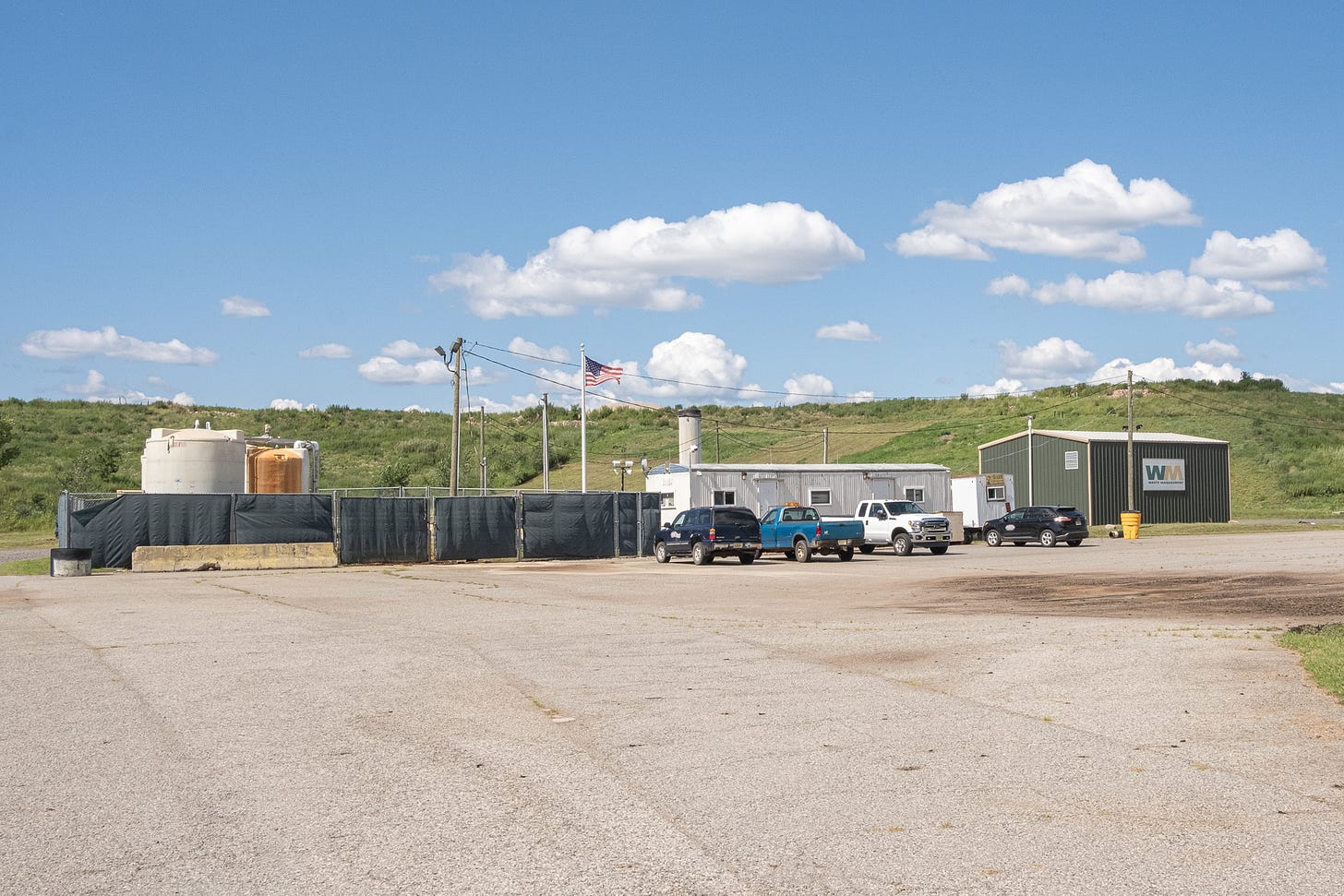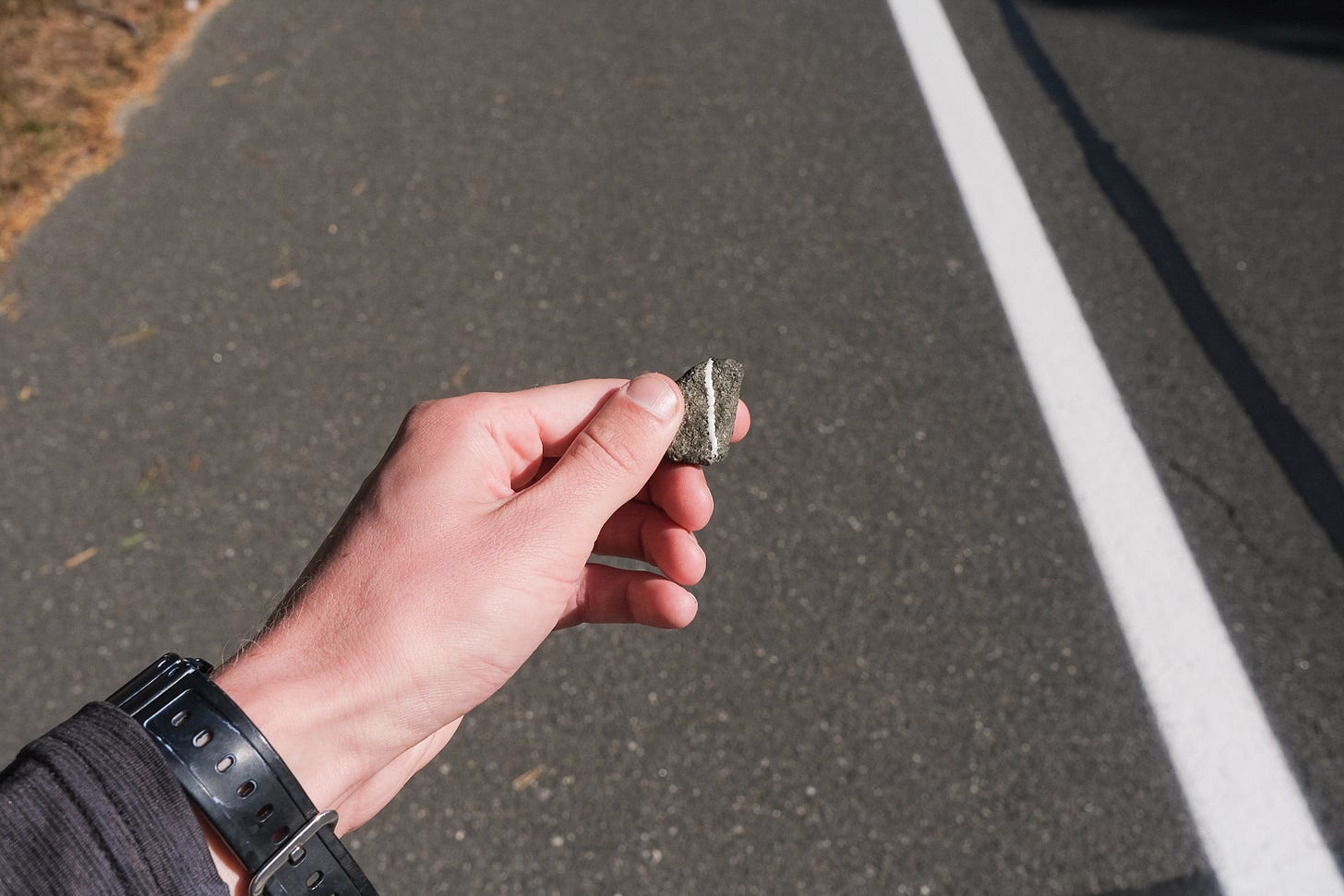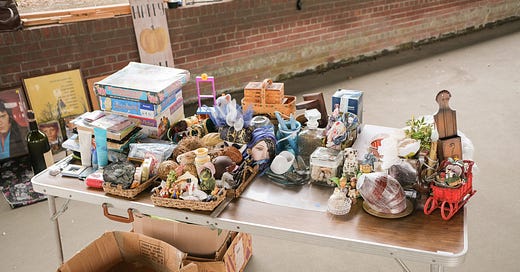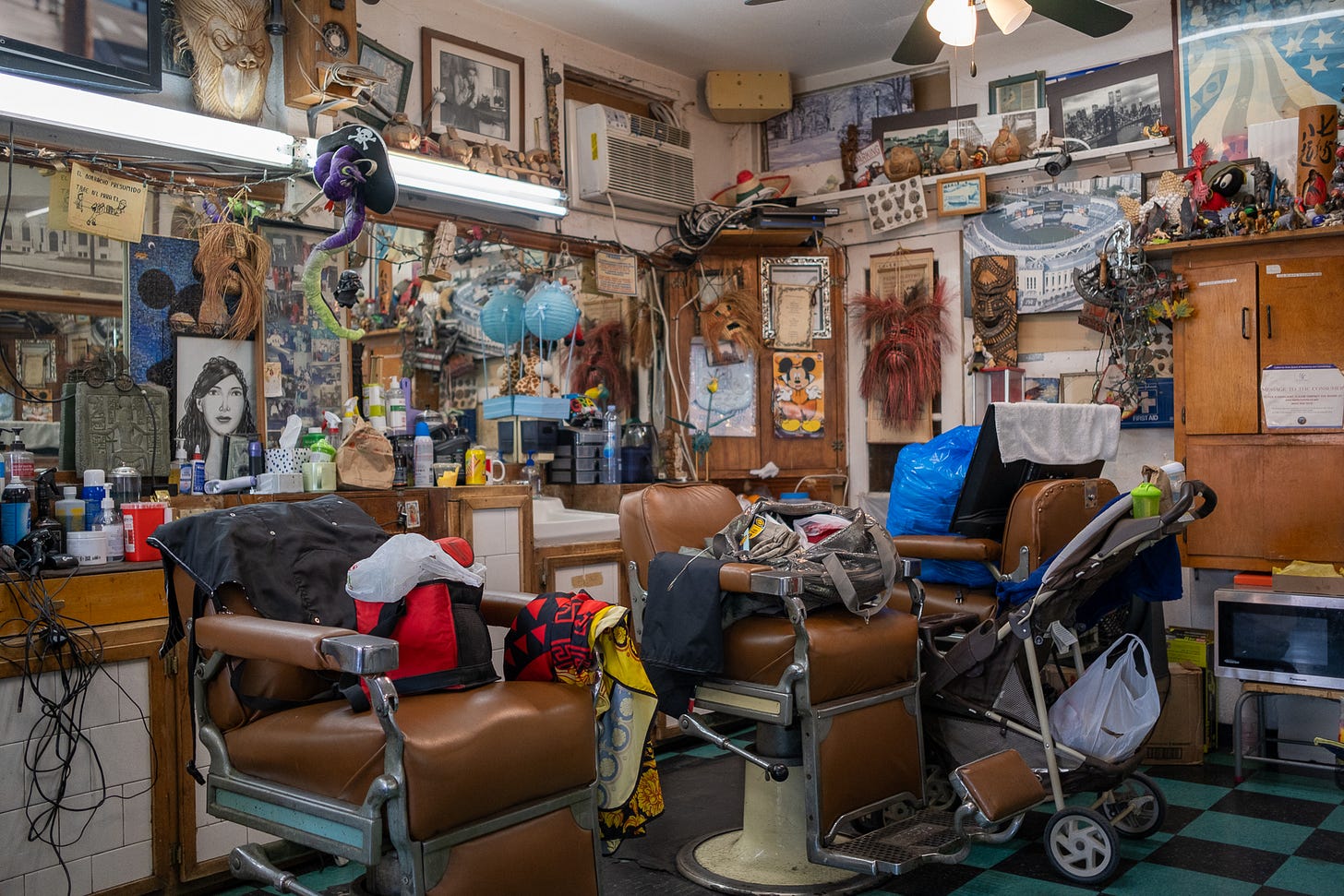Pedestrian 35: The Weight of Objects
My Grandfather’s Closet, Working at Goodwill, and Swedish Death Cleaning.
Three months after moving to New York City, I got a call from my father. My grandfather was dead. A heavy smoker, he’d succumbed to chronic obstructive pulmonary disease complications at seventy-three years old.
A week later, I was back home in Iowa. Before the visitation, my grandmother called my family to rummage through the remainder of my grandfather’s belongings. Continuing to live in the place my grandparents called home for forty years was hard enough without his presence; living in a house full of his belongings was another story. She was visibly upset.
“Who will open my jars for me now?” she cried.
My cousins and I spent half an afternoon parsing what belongings remained. I remember sorting through the tools on his workbench, where he made tiny drawers out of exotic wood. In the basement, we discovered the helmet he kept as a souvenir from his days as a United States Marine stationed in Japan or the canes resting beside the front door—even though my grandfather never needed a cane—but jokingly collected as a testament to his old age. Anything we didn’t want would be donated to Goodwill.
I’m Alex Wolfe, and this is Pedestrian, a newsletter on the observations, feelings, people, and experience of moving—often walking—through the built environment.
Coincidentally, I worked at Goodwill in high school—years before my grandfather’s death—where going through the former belongings of the deceased was not uncommon. I worked nights and weekends as a donation sorter. As such, I was the first point of contact for all donations. My task was to assess the quality of all items coming in and determine whether said items had any resale value. Once inspected and sorted, sellable goods were thrown into large commercial bins, loaded into a semi-truck trailer, and distributed to various Goodwill locations throughout central Iowa.
Goodwill toed a fine line between a thrift store and a typical dump. I couldn’t believe how many people unloaded bags of trash under the pretense that all donations would be accepted. The job was a tough lesson in managing people’s expectations, but working as a donation sorter had perks—despite making nearly minimum wage—like getting first dibs on valuable objects. The year was 2008, and I was sixteen. Personal demand for Polaroid instant cameras, vinyl records, and vintage 10-speed bicycles was high. Occasionally I’d get lucky while sorting through bags of clothing covered in cat piss and discover a $20 bill inside the pocket of an old suit coat.
The possibility of finding valuables kept work light and meaningful, pulling me through many boring shifts, but eventually, the novelty wore off. I was no longer hunting for treasure but sorting through once useful objects now relegated to useless junk by their original owners. I never understood why anyone would donate whole albums of family photos or books inscribed with personal messages from loved ones. My heart dropped each time I found the same radio my family owned and valued—a reminder that most objects are mass-produced, not unique—lying in the bottom of a commercial bin. I got distracted when finding clothing with the previous owner’s name written on the label and fixated on McDonald’s receipts from 1995 found in an old purse. I attempted to piece together the life of someone I never knew with each discovery. What prompted these people to discard their belongings? Working at Goodwill was a humbling experience, reminding me that one person’s treasure is just another’s junk. Eventually, my manager stopped giving me shifts, and I found another job.
Parsing through my grandfather’s belongings was not unlike sorting through Goodwill donations in high school, except these objects didn’t belong to a stranger but someone I knew. Going through his closet was an unexpectedly intimate experience. Inside, the faint smell of aged wood and detergent. I saw the loose threads of his button-downs and the unraveling hems of his pants, likely decades old. I imagined him waking up each morning and selecting a shirt from the neatly folded stack beside his belts. His closet was a space that anyone rarely saw throughout his life (has anyone seen the inside of your closet?). Growing up, we weren’t close; I felt a more intimate connection while looking through his closet. I caught a glimpse of the life he lived.
My grandfather was also a lifelong duck hunter. Leaning in the corner of his closet was a .22 rifle and a 12 gauge shotgun. Above the gun barrels, I saw a collection of metal bands strung up and hanging from a hook. These bands once sat on the ankles of the ducks my grandfather hunted and were used by the state conservation department to track their migration. Instead of returning the bands, my grandfather kept them in his closet. I decided these bands were a proper token of his existence and took them to New York. As a tribute, they have hung from a metal hook in my closet ever since.
I have complicated feelings about the objects I live with. I’m overly sensitive to the amount of things I own and obsess over what I can donate, throw away, or gift to friends at all times. The objects that manage to stick around tend to become more challenging to let go of or impossible to shed. It’s difficult not to grow a sentimental attachment. The frequency of attachments has only increased over the years, having experienced an apartment fire in 2019, destroying most of my belongings. I have very little that has stuck with me throughout my life, save for my social security card and birth certificate.
Among my oldest objects—aside from my journals—is a lucky rabbit's foot that I won during a summer reading program in the fourth grade. Next, a ceramic jar I made in middle school art class, which has served several functions, such as a flower pot and change jar, but has been my designated pen and pencil holder for a couple of years. On my radiator is a money tree I bought from a bodega eight years ago—when I moved to New York. The purchase felt symbolic at the time, considering I was making little money. Having survived the apartment fire, the tree is among my most prized possessions.
I must remind myself that these objects I hold dear are just things, and all non-living things eventually deteriorate and break down by the elements, microorganisms, or the ravages of time. Some live in a commercial bin in a Goodwill warehouse. Nothing lasts forever. There’s freedom in knowing that everything I own is not mine. One way or another, my money tree and I will part ways, for it will decompose, and eventually, I will leave this earth.

Decluttering practices have grown increasingly trendy in the last decade, especially with Marie Kondo’s popularity in the United States. Of those trends, I recently learned about the Swedish tradition of döstädning or “death cleaning.” The practice is just as it sounds: get rid of the possessions you no longer need in preparation for the end of life, making it easier for loved ones to manage your belongings once you’re gone.
Margareta Magnusson, author of The Gentle Art of Swedish Death Cleaning, writes, “There are a few things that I would like to save for myself only [besides] old love letters, programs, memories from traveling. I have gathered all these personal items in a box [marked] ‘throw away.’ Once I am gone, the box can be destroyed.” Magnusson argues it’s never too early to begin that box.

Can the metaphorical “throw away” box grow too full? Resting on my bookcase is a series of neatly organized binders filled with ephemera of little to no value in acid-free sleeves, a practice I started in high school but has become another way to document my life. Inside these sleeves are receipts, business cards, flyers, and expired MTA cards, among other things. On a hard drive is every photo I’ve taken since 2018—when I bought my first camera. Those same photos, thousands of them, have been uploaded to the cloud for safe measure. Above my kitchen cabinets is a storage bin filled with sketchbooks, notebooks, planners, and letters from friends I’ve managed to hold on to since I was a teen.
The weight of those objects often takes hold of me. I’ll continue saving them. My impulse soothes an anxiety about the passing of time, unsure if I’ll remember what life was like right now when I’m old. Memories often fade. I’m not concerned about what happens to these objects when I’m gone. Bonus points if someone sees the value in them, too. For now, these objects are much like going through my grandfather’s closet—they remind me of my existence and the life lived.
Thanks for reading,
Alex
Brooklyn, New York, 11220
As always, this is Pedestrian, a newsletter on the observations, feelings, people, and experiences of walking through the built environment. If you’d like to support this work, please share it with a friend. See you next month.







Another excellent piece of writing. They are all sentimental to me.